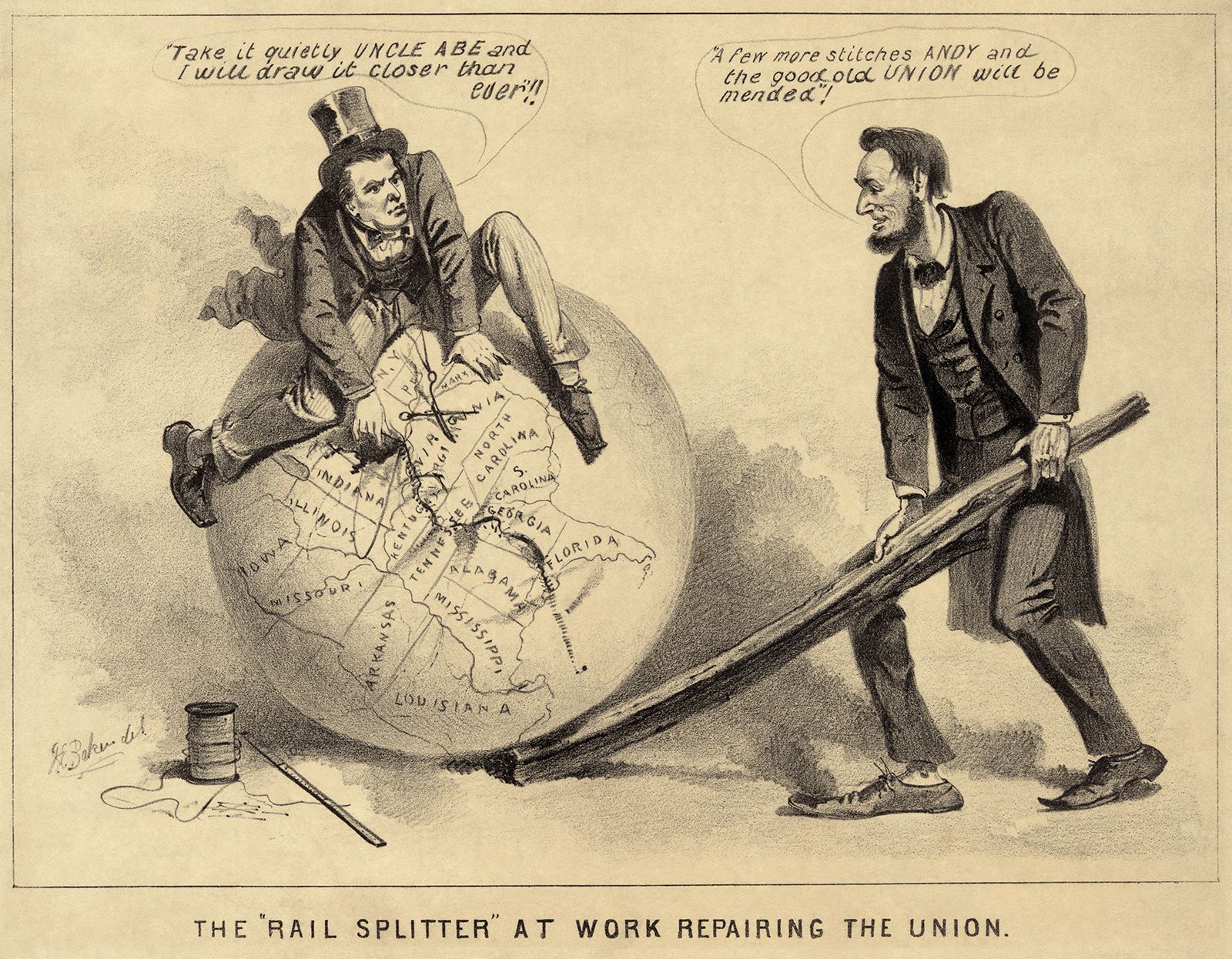Civil War Political Cartoons
Now when you heard the word cartoon, i am sure you may think of animation, like Scooby-doo or Sponge-bob Square-pants, maybe when you hear cartoon, anime may come to mind because anime is a cartoon it's Japanese cartoons, like Pretty Cure or Saint Seiya, But we are not talking about these "cartoons" were talking about the cartoons of the 1860s, CIVIL WAR ERA!, and now you're looking at me Sliver~Chan? How are there cartoons during the 1800s (Ok maybe that's not what you're thinking), But yep there were cartoons just they didn't move, and they were in newspapers, but let's get one with the history of Civil war Political Cartoons.
(What are Political Cartoons?)
Now i did not know there were political cartoons, but yeah they did exist, they are cartoons also known as Editorial Cartoons, they are graphics with public figures, expressing the artist's opinion. An artist who writes and draws such images is known as an editorial cartoonist. They typically combine artistic skill, hyperbole and satire in order to question authority and draw attention to corruption, political violence and other social ills.
They were Developed in England in part of the 18th century, the political cartoon was pioneered by James Gillray, although his and others in the flourishing English industry were sold as individual prints in print shops. And Founded in 1841, the British periodical Punch appropriated the term cartoon to refer to its political cartoons, which led to the term's widespread use.
(The Civil War Political Cartoon)
From 1861 to 1865, Newspapers played an enormous role during the Civil War, for an age without radio, TV, Phones you get the point!, theres were the means of Communications back in the day most papers took a lot of Strong Political positions too editing newspapers to pursue readers to Accept their points of view, to do so they make cartoons to drive home these ideas, for President Abraham Lincoln he took a lot of note to the influence about this flattering comment about Pro-Union Cartoonist of the period, "Thomas Nast has been our best recruiting sergeant", Thomas Nast by the way was a German-born American caricaturist and editorial cartoonist who's often considered to be the "Father of the American Cartoon".
When The Civil War Started Cartoons were detailed to a very and with satirical sketches with very wordy cartoons, and nast was responsible for developing a new type of cartoon one that was basically a caricature consisting of line drawing in which the subjects had depicted by exaggerating certain notable features.
This New Form used a few captions and focused instead on one single event that happened or an issue, this making it's point with just a few simple labels incorporated into the Drawings.
And a Cartoonist named Frank Bellew followed along Lincoln's reelection in 1864 which shows a Smiling Lincoln being carried across a body of water atop the shoulders of a large smiling figure whose cap proclaims his "Majority" seen in the background.
The Figure of the man is being pushed down into the water and is labeled "Little M", this is for Lincoln's Opponent George McClellan, and for cartoon's on the confederate side of Political Cartoons, one of the best known Confederate Cartoonist was named Adalbert John Volck, who made acid like attacks on Lincoln that helped spur a lot of Southern efforts, The South had also published copies of the anti-union cartoons from English journals as Punch.
One Such Cartoon made by John Tenniel portrays Lincoln as a scared raccoon being caught and trapped by John Bull the Symbol of England. At the Height of the War the cartoons on both sides of the war became even more savage in its content the Cartoonists spent little time building their own side preferring to instead tear down by attacking their weaknesses and ridiculing it.
For Example when the south learned about Lincoln's Emancipation Proclamation, Volck expressed the southern view of the document in just one single drawing. This Showed Lincoln at work on the Proclamation having one foot crushing the U.S Constitution meanwhile with a Northern Cartoonist Monked the idea of voluntary enlistment in the south by showing a farmer entering a recruiting office at Bayonet Point.
(Ending)
And So that is Political Cartoons of the Civil War, this is my first on reading a Story of America Card, I did edited it a little bit too but i hope you liked it and got a little bit of American History out of it, I am gonna make more of this so i hope you enjoyed tell him in the Comments and and I'll see you next time Bye.

Bạn đang đọc truyện trên: AzTruyen.Top